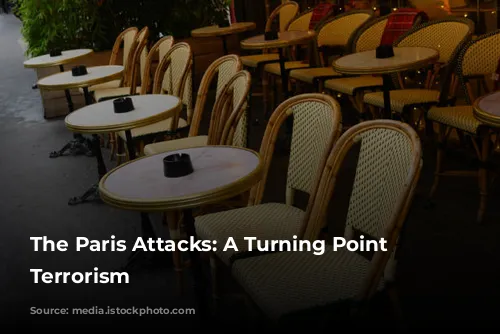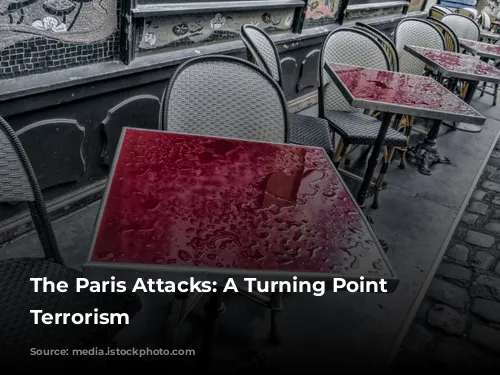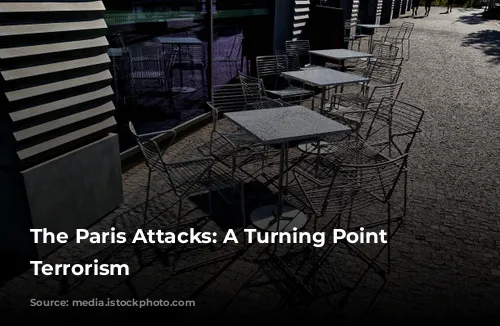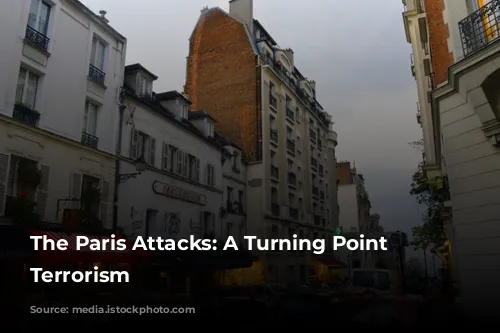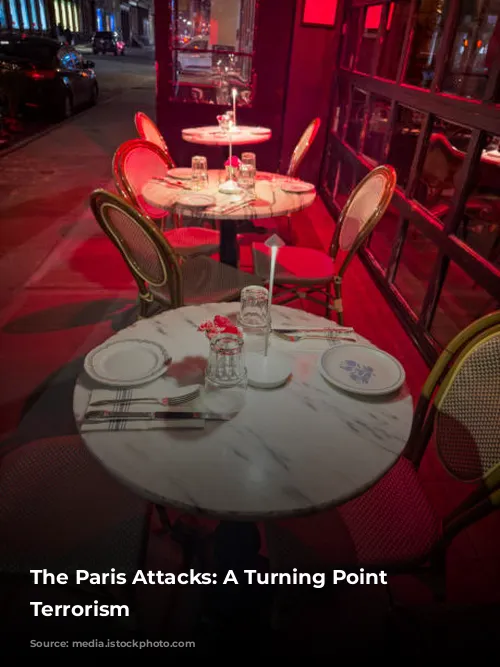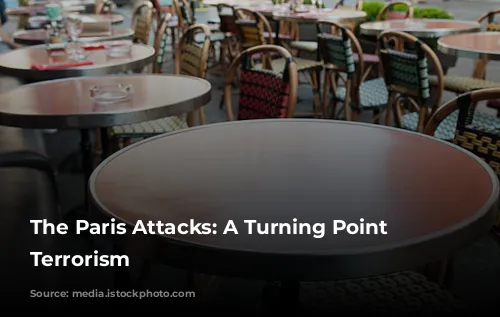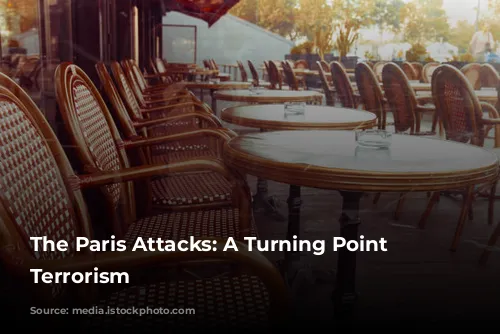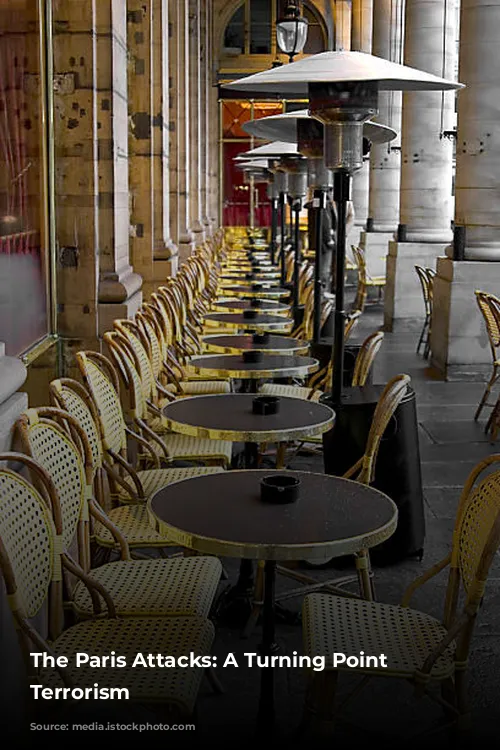Imagine a city under siege. This wasn’t a movie scene; this was the reality of Paris in November 2015. A series of coordinated terror attacks, meticulously planned and brutally executed, left the city reeling. This tragedy wasn’t just about the 130 lives lost and hundreds injured. It was a wake-up call for the world, showing just how vulnerable we are to these kinds of assaults.
The Paris attacks weren’t isolated events; they were part of a larger pattern of coordinated terrorist attacks (CCTAs). The Department of Homeland Security defines these attacks as “acts of terrorism that involve synchronized and independent teams at multiple locations, sequentially or in close succession, initiated with little or no warning, and employing one or more weapon systems.”
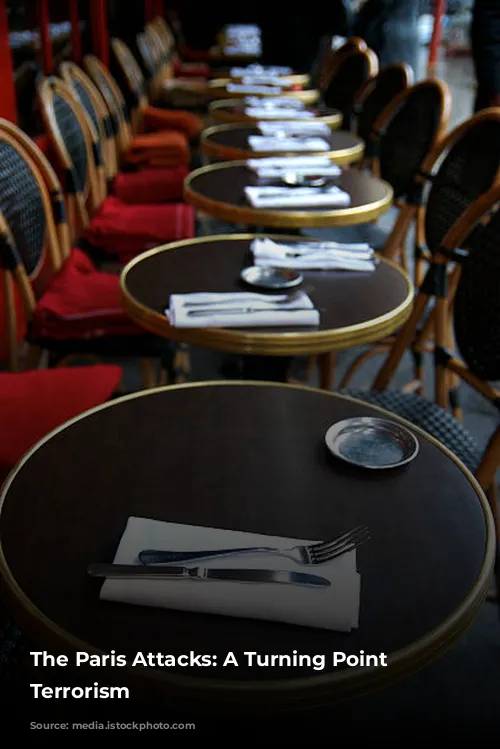
A Timeline of Terror
The attacks on Paris were the culmination of a year of escalating violence. In January 2015, the world watched in horror as terrorists attacked the headquarters of the satirical magazine Charlie Hebdo, sparking a manhunt and a hostage situation. Months later, in August, a failed attempt on the Thalys Amsterdam-Paris train was foiled by three brave American passengers. These incidents, though horrific, were just a prelude to the carnage that unfolded in November.
On November 13, 2015, the attacks began with the detonation of explosives near the Stade de France (soccer stadium), the site of a friendly match between France and Germany. Meanwhile, at the Bataclan concert hall, three attackers entered the venue and opened fire on the crowd, taking hundreds hostage. At nearly the same time, teams of attackers targeted cafes and bars, spraying bullets into crowds of unsuspecting patrons.
The attacks lasted for several hours, leaving a trail of destruction in their wake. The French president, who was at the stadium, was safely evacuated. The French government quickly implemented a state of emergency, closing borders and deploying troops to the city. A manhunt ensued, leading to the apprehension of several suspects, including the lone survivor of the attack.
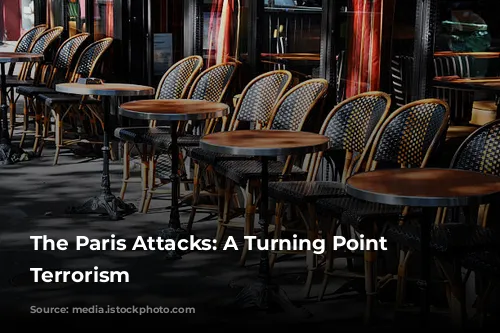
Lessons Learned from the Paris Attacks
The Paris attacks exposed vulnerabilities in the security apparatus of a major world city. The attacks were meticulously planned, and their goal of mass murder was achieved. The terrorists, operating in small, well-armed teams, were able to overwhelm police and emergency services. They took advantage of the chaotic nature of the attacks, exploiting weaknesses in communication and coordination among responders.
The attack at the Stade de France highlights the importance of recognizing a potential CCTA threat and responding accordingly. Despite the explosions outside the stadium, French authorities chose not to evacuate the stadium for fear of triggering a secondary attack. Their decision, though risky, ultimately prevented a greater loss of life.
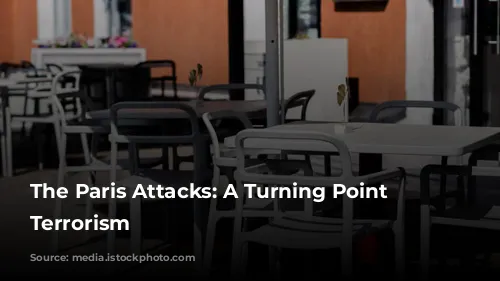
MACTAC: A New Approach to Counter-Terrorism
The Paris attacks prompted a reassessment of counterterrorism strategies. The Los Angeles Police Department (LAPD) pioneered the concept of Multiple Assault Counter-Terrorism Action Capabilities (MACTAC), a new approach to combating CCTAs. MACTAC focuses on rapid response and immediate action, allowing officers to move into the fray and stop the attackers before they can cause more harm.
MACTAC is designed to prevent the over-convergence of responders at the scene of an attack. This is critical for avoiding “target saturation,” which can hinder responders’ ability to effectively control the situation. The concept emphasizes staying within assigned areas, making it easier to react to multiple incidents. This approach was successfully implemented at the Route 91 Harvest music festival in Las Vegas, where officers were able to respond to multiple attacks in a coordinated manner.

Moving Forward: A Call to Action
The Paris attacks were a tragic reminder of the threat posed by terrorism. These events have shown the world that CCTAs are a growing threat that requires a comprehensive response. By adopting the principles of MACTAC and focusing on preparedness, we can better protect our cities and communities from these kinds of attacks.
The response to CCTAs is not just the responsibility of law enforcement; it requires a collaborative effort involving all levels of government, businesses, and citizens. We must work together to enhance intelligence sharing, improve communication, and build community resilience. Only by working together can we hope to prevent future tragedies like the Paris attacks.
